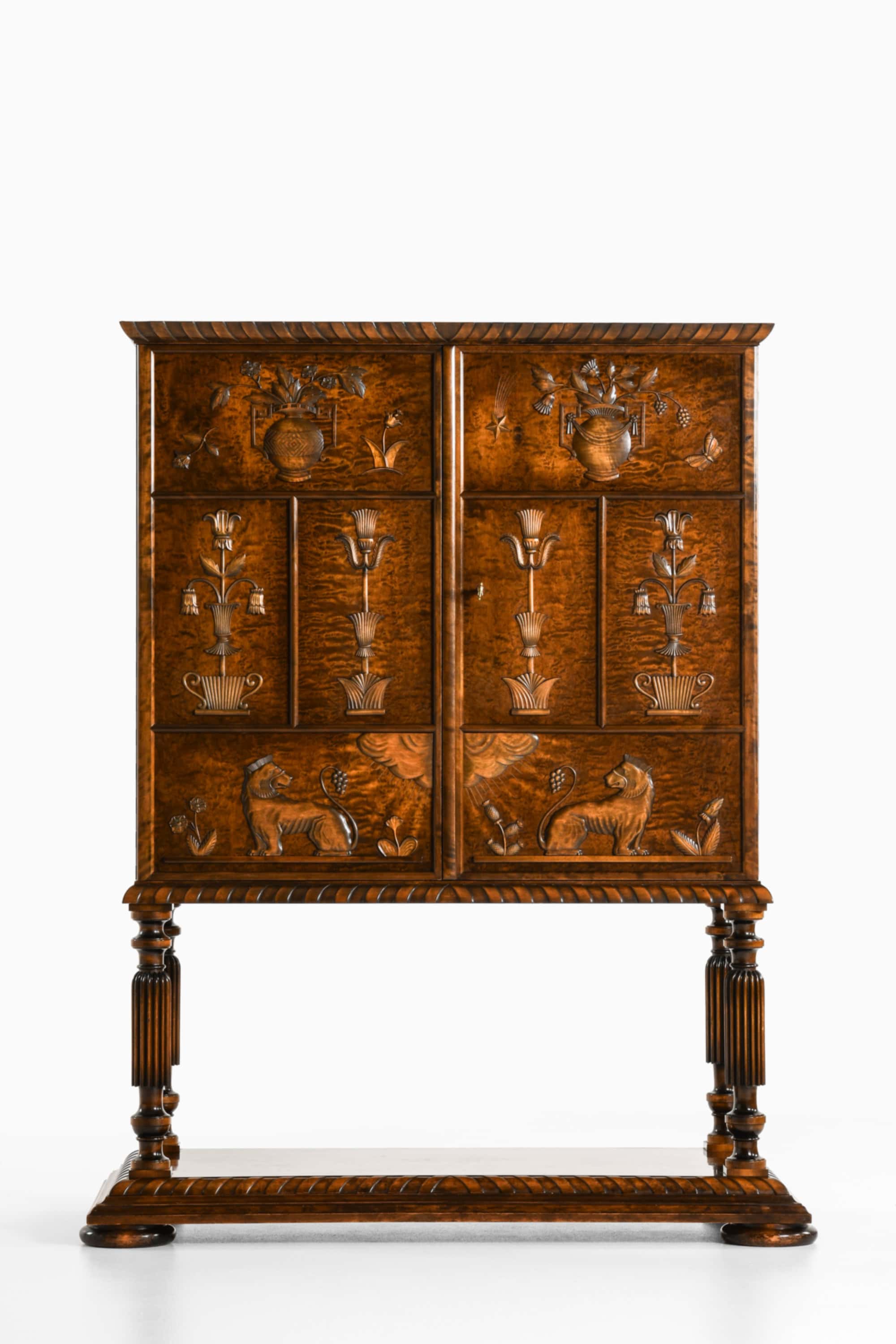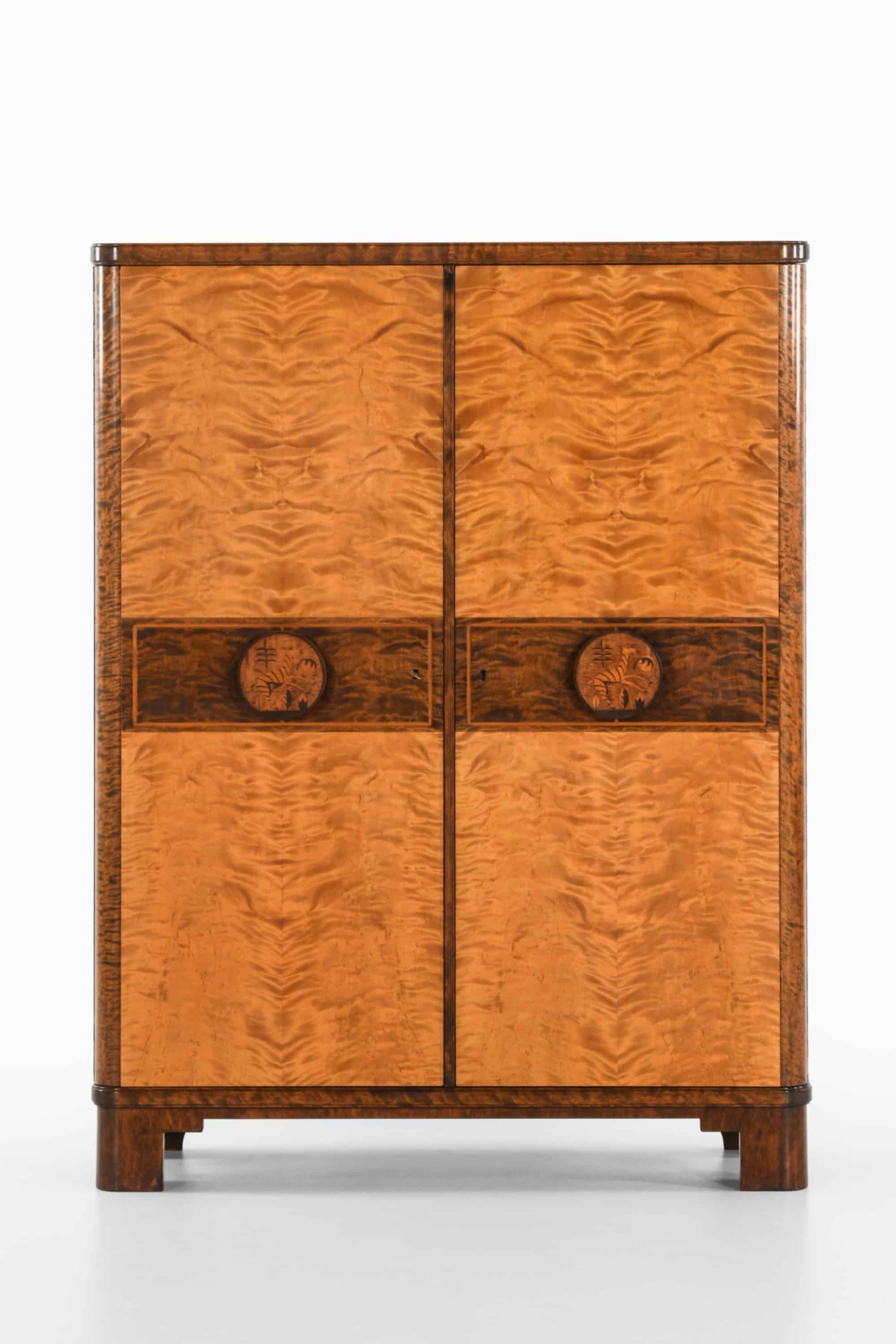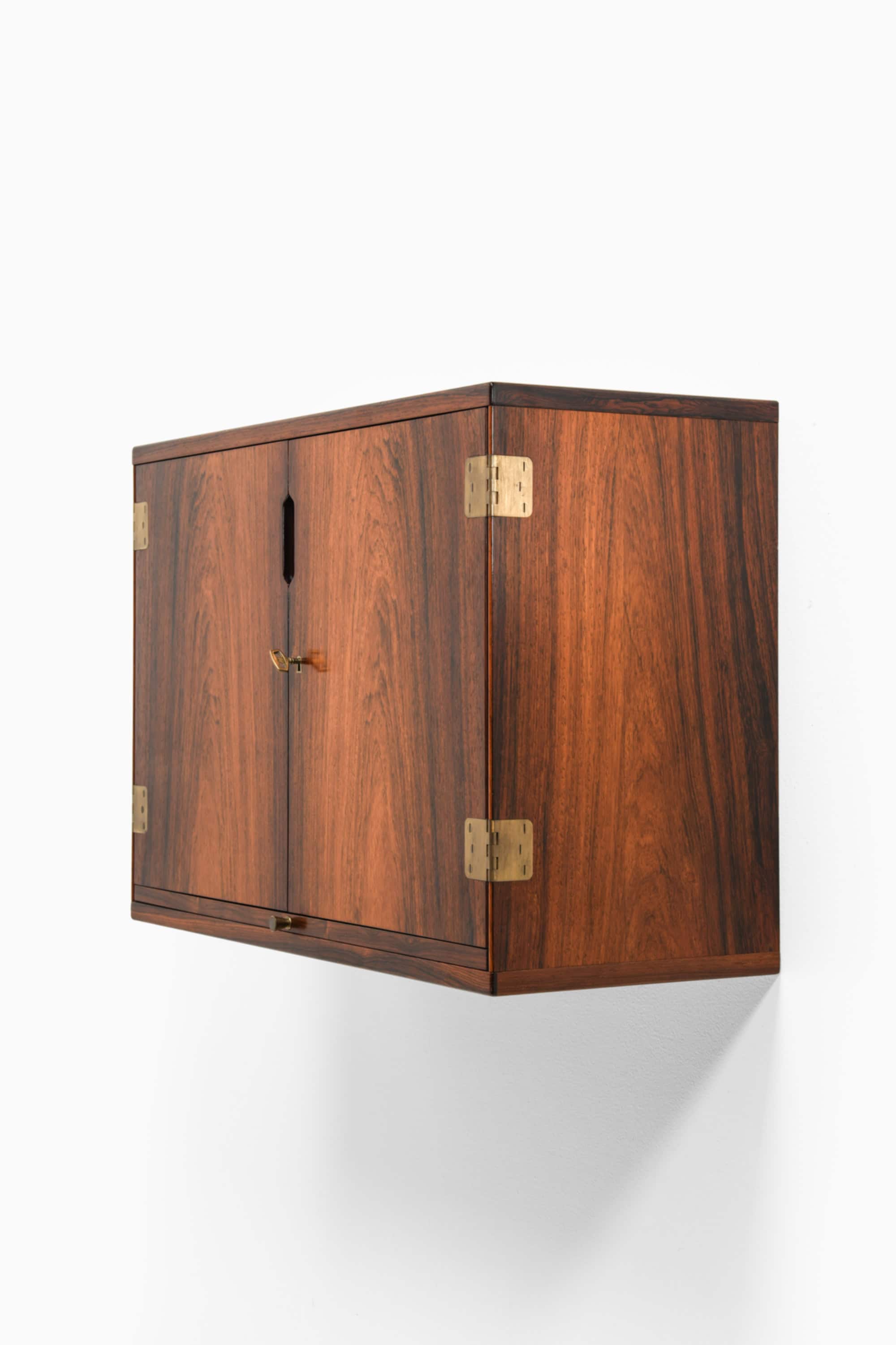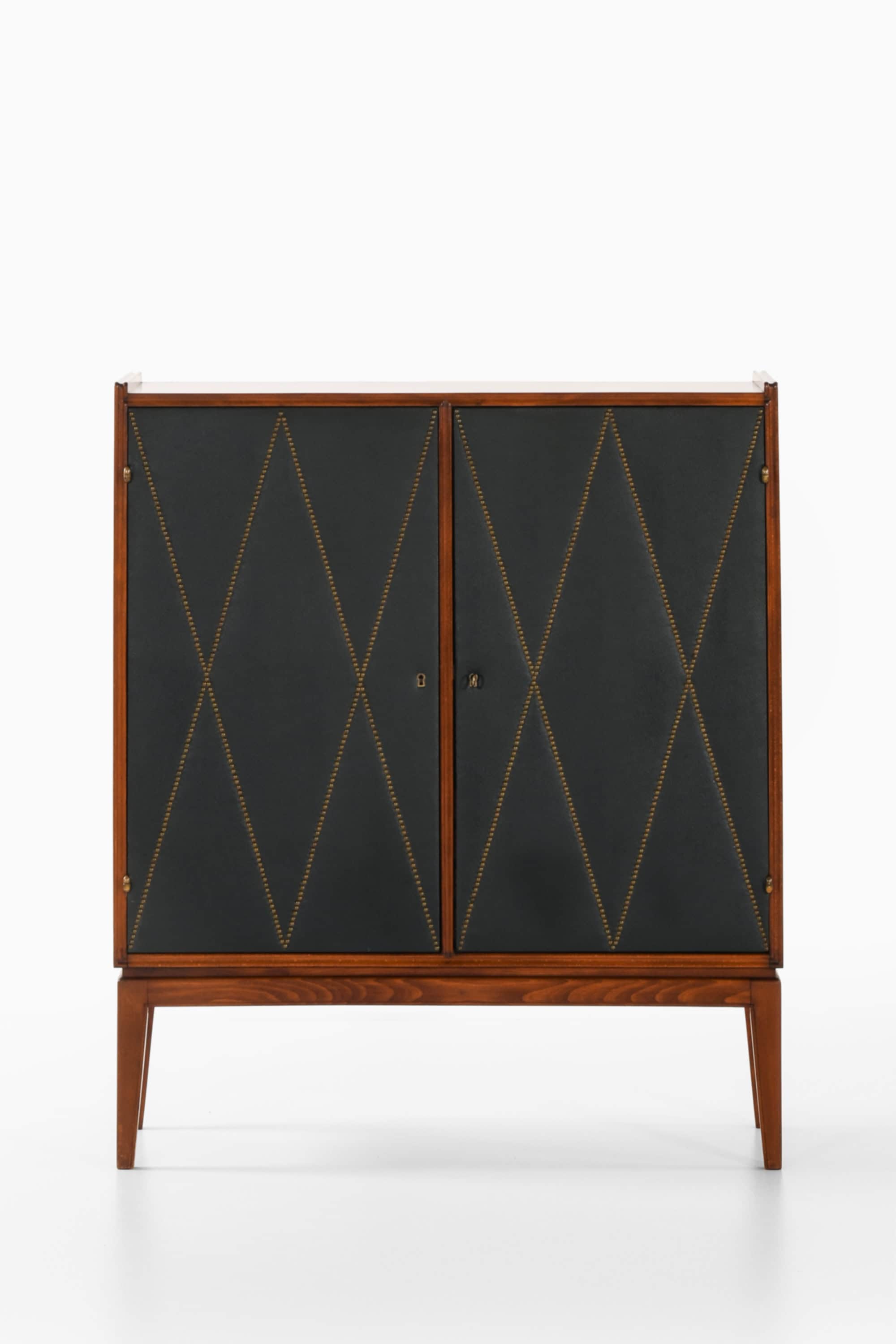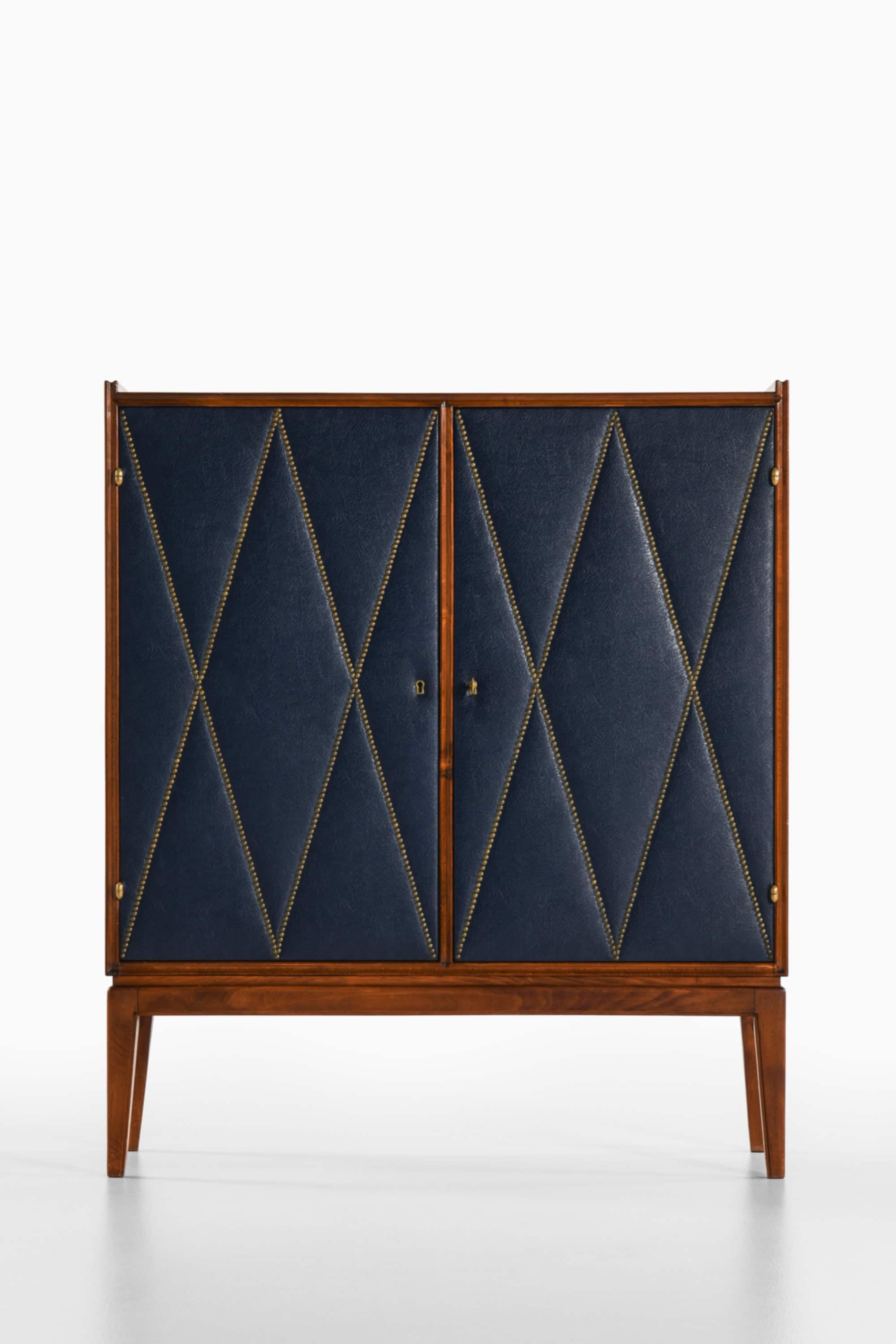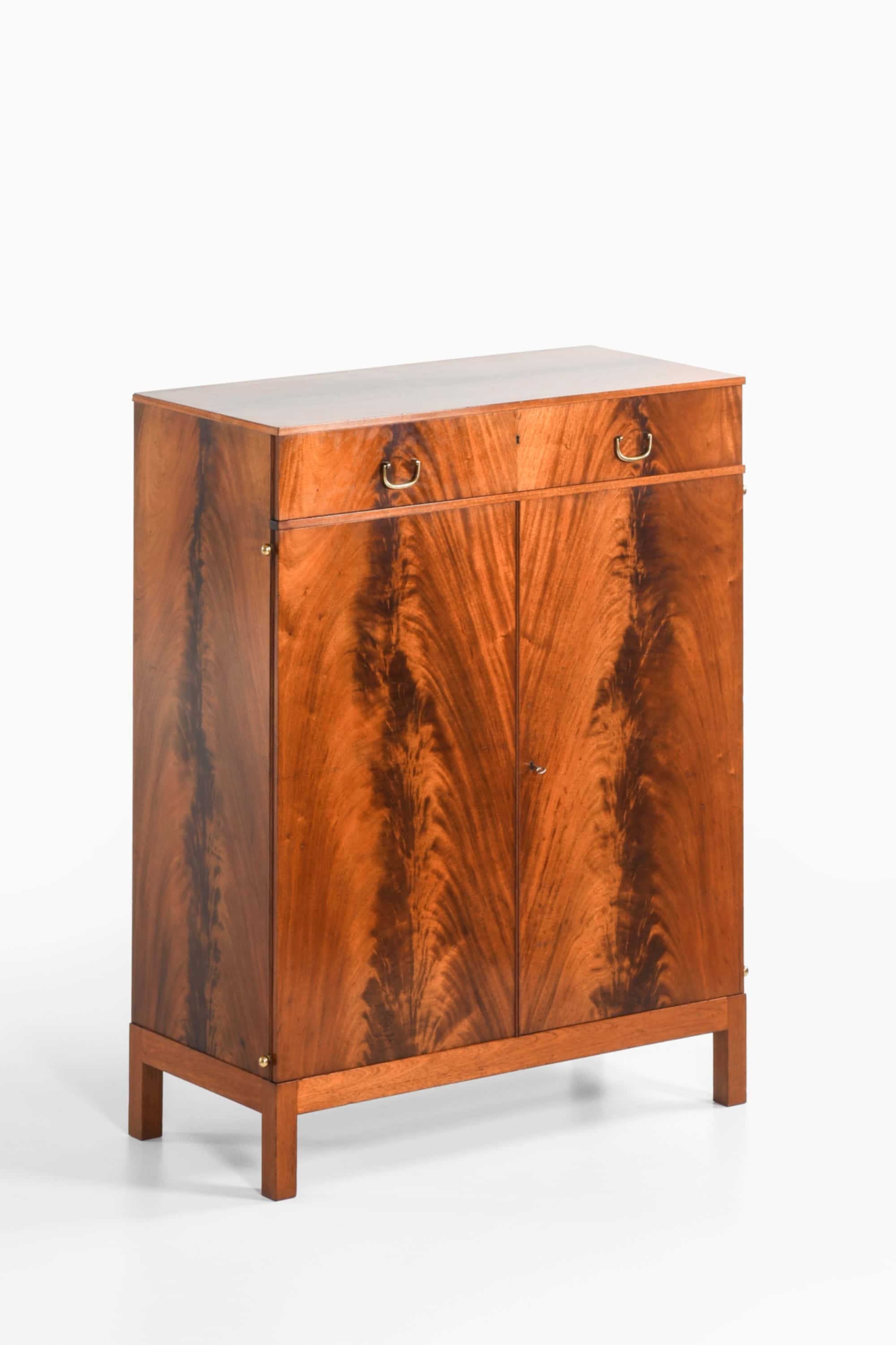Gösta Thorell cabinet
This unique Swedish Grace cabinet was designed and executed as an apprentice piece by Gösta Thorell and produced by cabinetmaker Georg Nyman in Sweden in 1929. The cabinet is constructed from rosewood, brass, and thuja root, demonstrating a high level of craftsmanship and decorative skill, characteristics required to earn recognition in a master cabinetmaker’s tradition. It was first prize at the Stockholm City Craft Association’s Industrial Lottery, held on 3 December 1929.
The cabinet presents an ornate façade, featuring intricate marquetry work with stylized depictions of figures carrying flowers and fruits, set within a geometric maze-like frame of darker and lighter veneers. The upper and lower borders of the cabinet are decorated with detailed inlays of grapevine motifs, showcasing fine precision and thematic continuity. The construction rests on four robust legs, shaped with square profiles and adorned with lathe-turned elements above the feet and capitals. A lower stretcher shelf adds structural strength and visual balance to the tall, upright form.
Upon opening the two main doors, the interior reveals a sophisticated arrangement of drawers and shelves, offering functional storage while maintaining the high level of detail seen on the exterior. Each drawer is fitted with brass star-inlaid knobs, and the entire interior is finished in a warm-toned wood, contrasting gently with the darker rosewood exterior. The craftsmanship, materials, and finishing are all indicative of the extraordinary effort involved in apprentice masterworks of the period.
Gösta Thorell’s cabinet exemplifies the blending of traditional Swedish craftsmanship with the emerging influence of Art Deco and classicism during the late 1920s. The formality of the structure combined with the decorative artistry reflects a transitionary period in Scandinavian furniture making, where technical mastery was complemented by increasing decorative ambition.
The condition of the cabinet is very good, with minor wear consistent with age, including some light surface marks and a gentle, matured patina across the wood surfaces and brass elements.
The dimensions are 103 cm in width, 50 cm in depth, and 167.5 cm in height, which corresponds approximately to 40.6 inches wide, 19.7 inches deep, and 65.9 inches high.
Literature
Otto Schulz, Magazine Boet 1930, model depicted on page 8.
Dimensions (cm) | W: 103 / D: 50 / H: 167.5 |
| Producer | Georg Nyman |
| Decade | 1920s |
| Country | Sweden |
| Style | Scandinavian Modern, Swedish Grace |
| Material | Brass, Rosewood, Thuja |
| Designed in | 1929 |
| Item Number | 126013 |
Gösta Thorell















